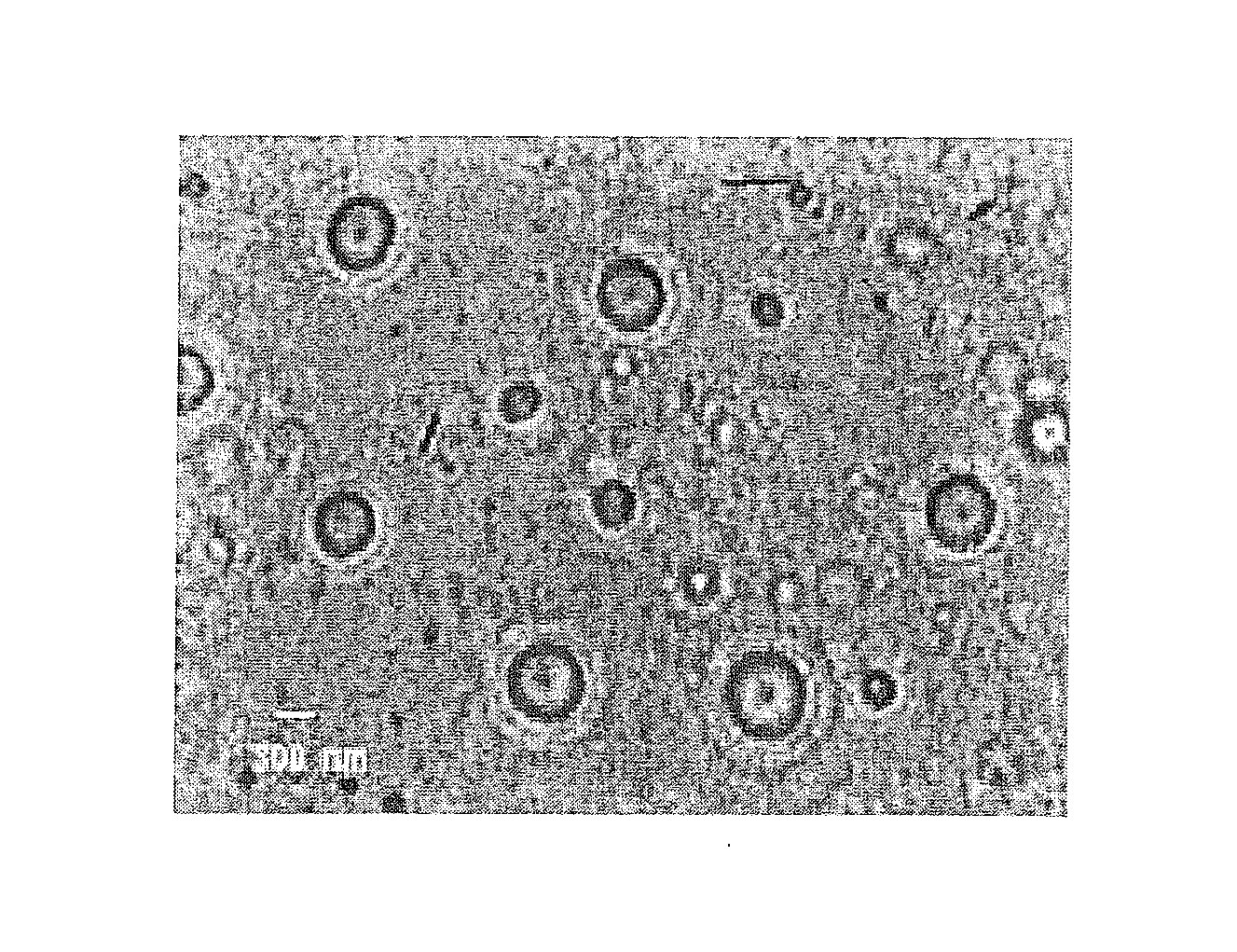Novel method for producing nanocapsules in the absence of an organic solvent, and nanocapsules produced thereby
a nanocapsule and organic solvent technology, applied in the field of nanocapsules, can solve the problems of nanocapsule formation, long and expensive, and achieve the effect of convenient industrialization and convenient operation
- Summary
- Abstract
- Description
- Claims
- Application Information
AI Technical Summary
Benefits of technology
Problems solved by technology
Method used
Image
Examples
example
[0073]The qualitative and quantitative composition of an aqueous suspension of nanocapsules loaded with chlorhexidine base is given below:
Polycaprolactone (cas #24980-41-4) (PCL)375mgLabrafil ® M 1944 CS (cas #97488-91-0 and360mgcas #9004-96-0)Plurol ® oleique (cas # 9007-48-1)4gChlorhexidine base (cas #55-56-1)90mgSodium carboxymethylcellulose (cas #9004-32-4)1g0.15% solution of Tween ® 80 (cas #9005-65-5)qs 100g
[0074]In a first step, the PCL is melted at approximately 65° C. in a beaker. The water-dispersible oils (Labrafil® M 1944 CS and Plurol® oleique) are mixed with the molten PCL, with moderate mechanical stirring using an Ultra-Turrax®. The chlorhexidine base is dispersed with the molten PCL and the water-dispersible oils until a clear mixture is obtained. A hydrogel of carboxymethylcellulose at 1% in distilled water is heated to 60° C. in order to be dispersed, with moderate mechanical stirring using an Ultra-Turrax®, in the molten PCT / water-dispersible oils / chlorhexidine b...
PUM
 Login to View More
Login to View More Abstract
Description
Claims
Application Information
 Login to View More
Login to View More - R&D
- Intellectual Property
- Life Sciences
- Materials
- Tech Scout
- Unparalleled Data Quality
- Higher Quality Content
- 60% Fewer Hallucinations
Browse by: Latest US Patents, China's latest patents, Technical Efficacy Thesaurus, Application Domain, Technology Topic, Popular Technical Reports.
© 2025 PatSnap. All rights reserved.Legal|Privacy policy|Modern Slavery Act Transparency Statement|Sitemap|About US| Contact US: help@patsnap.com

